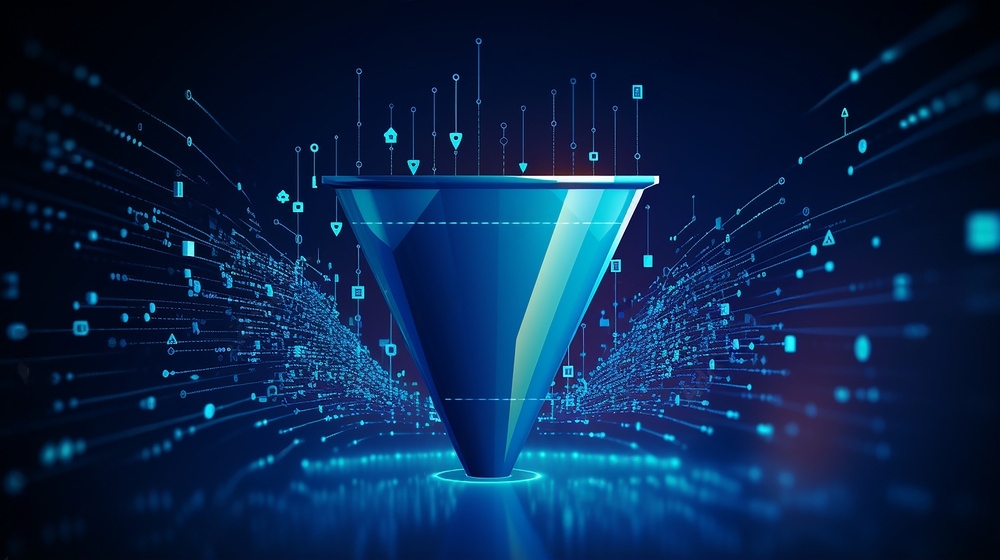In 2021, 51–76% of organizations reported utilizing inbound marketing automation. Inbound lead generation strategies in B2B are designed to attract potential customers by providing valuable content, engaging on social media, employing SEO tactics, email marketing, and hosting webinars. These strategies aim to direct prospects to a company’s website or platform, where they can learn about its products and services and make contact with the company.
What are inbound leads in B2B?
In B2B, inbound leads refer to potential customers who express interest in a business voluntarily. These leads often initiate contact by visiting the business’s website or engaging with its content, showcasing genuine interest without direct outreach from the business itself.
Why generate inbound leads for business growth?
Generating inbound leads is critical for business growth because it indicates genuine interest from prospective customers. Inbound leads contact the organization naturally, suggesting a better possibility of conversion as opposed to outbound leads, which need deliberate marketing.
Businesses that focus on attracting inbound leads can build a long-term pipeline of interested prospects, increase brand visibility, and position themselves as industry leaders.
This approach builds stronger customer relationships, increases trust and credibility, and, ultimately, leads to long-term success and sustainable growth in the competitive B2B market.
1# Understanding the B2B Buying Journey
The B2B buying journey refers to the process a business goes through when making purchasing decisions. It typically involves multiple stages, including awareness, consideration, and decision-making. Understanding the journey helps to develop marketing strategies that engage potential consumers and drive conversions successfully.
Exploring the stages of the B2B buying process
The stages of the B2B buying process include the various steps that businesses take when purchasing products or services.
These stages frequently include identifying needs, researching potential solutions, evaluating vendors, negotiating terms, and finalizing the purchase decision.
Each stage necessitates careful consideration and may involve multiple decision-makers throughout the organization.
Here are the stages of the B2B buying process
- Needs Identification: Businesses recognize a need or problem that requires a solution.
- Research: They conduct research to identify potential solutions and gather information about available options.
- Evaluation: Businesses compare different products or services based on criteria such as features, pricing, and reputation.
- Vendor Selection: They narrow down their options and choose a vendor or supplier that best meets their requirements.
- Negotiation: Negotiations take place regarding terms, pricing, and any customization or additional services.
- Purchase Decision: A final decision is made to proceed with the purchase from the selected vendor.
- Implementation: The purchased product or service is integrated or implemented within the business operations.
2# Recognizing the role of inbound leads in each stage
Inbound leads are important at every stage of the B2B buying process. They provide valuable insights and information to businesses, allowing them to better understand customer needs, tailor their offerings, and cultivate relationships. From initial research to final decision-making, inbound leads guide businesses through the process, allowing for informed decisions and successful outcomes.
Creating Targeted and Valuable Content
It is critical to create content that is relevant to the needs and interests of your target audience. Businesses can successfully attract and engage inbound leads by providing valuable information tailored to their preferences.
Importance of content in attracting inbound leads
Content is essential for attracting inbound leads because it serves as a valuable resource that addresses their concerns and interests. Businesses that provide relevant and informative content can establish credibility, build trust, and ultimately capture the attention of potential customers in the B2B market.
3# Strategies for creating targeted and valuable content
Conducting market research helps develop focused content by understanding consumer wants, making it an effective strategy. It also personalizes information to appeal to certain categories of incoming leads. It helps use diverse content forms like blogs, videos, and infographics to address potential client pain points effectively.
Using Social Media for Inbound Lead Generation
Social media platforms provide numerous opportunities for inbound lead generation in the B2B landscape. Businesses that establish a strong presence on platforms such as LinkedIn, Twitter, and Facebook. They engage with the audience, share content, join industry discussions, and drive inbound leads through meaningful interactions and relationships.
4# Search Engine Optimization (SEO) Tactics
Optimizing content for search engines is critical for generating inbound leads. SEO tactics such as keyword research, on-page optimization, and link building improve visibility in search results. Businesses attract organic traffic by ensuring content relevance and adherence to search engine best practices.
Optimizing website content for search engines
Optimizing website content entails structuring pages, headings, and metadata to comply with search engine algorithms, thereby increasing visibility and attracting organic traffic. Businesses improve search rankings by using relevant keywords and providing valuable information to drive more inbound leads.
Using keywords and other SEO strategies for B2B lead generation
Keywords are critical in SEO for B2B lead generation because they allow businesses to target specific audiences while increasing website traffic. Incorporating keywords strategically into website content, blog posts, and other digital assets boosts search engine visibility. It also makes it easier for potential clients to find and connect with the business.
5# Implementing Effective Email Marketing
Effective email marketing entails creating compelling and personalized messages that are tailored to the recipient’s interests and needs. Businesses can nurture leads and increase conversions by segmenting email lists, optimizing subject lines and content, and leveraging automation. Email marketing remains an effective tool for engaging prospects and building long-term relationships.
Create personalized and engaging email campaigns.
Personalizing and engaging email campaigns entails tailoring content to recipients’ preferences and behaviors, which fosters a stronger connection and increases the likelihood of engagement and conversion.
Developing leads through strategic email communication
Nurturing leads through strategic email communication entails providing relevant and valuable content at the appropriate time, guiding prospects through the purchasing process, and establishing trust and credibility.
6# Utilizing Webinars and Events
Harnessing the power of webinars and events involves hosting online seminars or in-person gatherings to educate, engage, and convert leads, offering valuable insights and fostering meaningful interactions.
Hosting webinars and virtual events for lead generation
Hosting webinars and virtual events serves as a potent lead generation tactic, providing platforms to showcase expertise, address pain points, and nurture prospects through informative sessions.
Strategies to engage and capture leads during online events
Engaging and capturing leads during online events necessitates compelling content, interactive sessions, and strategic follow-ups to encourage participation and drive conversions effectively.
7# Lead Scoring and Qualification
Lead scoring and qualification entail assigning values to leads based on their actions and characteristics, which helps prioritize follow-up efforts and identify prospects with the highest conversion potential. This process ensures efficient resource allocation and directs sales efforts toward leads that are most likely to result in successful outcomes.
Lead score is important for ranking prospects.
Lead scoring is an important tool for identifying prospects by assigning numerical values based on their level of engagement and potential to purchase. This allows sales teams to prioritize high-scoring prospects, which improves conversion rates and sales process efficiency.
Implementing effective lead qualification criteria
Effective lead qualification criteria ensure that only high-quality leads are forwarded to the sales team for further action. This entails identifying specific attributes and behaviors that indicate a prospect’s willingness to buy, allowing sales representatives to better allocate their time and resources and pursue leads with the highest likelihood of success.
Conclusion
Effective lead scoring, webinars, email marketing, social media interaction, focused content, and SEO strategies are all essential to B2B inbound lead generation success.
Businesses are encouraged to implement and adapt these strategies to attract and nurture valuable inbound leads, resulting in increased growth and success in the B2B marketplace. If you wish to generate quality leads for your business, we are here to help with our lead generation services. To learn more, contact us now.
FAQs
How does inbound lead generation benefit B2B businesses?
Inbound lead generation benefits B2B businesses by attracting qualified leads who are already interested in their products or services.
What role does email promotion play in inbound lead generation?
Email promotion plays a crucial role in inbound lead generation by nurturing leads, providing valuable information, and promoting services through targeted and personalized communication.
Why is content marketing is essential in B2B inbound lead generation?
Email promotion plays a crucial role in inbound lead generation by nurturing leads, providing valuable information, and promoting services through targeted and personalized communication.






